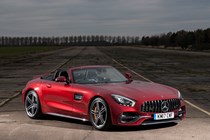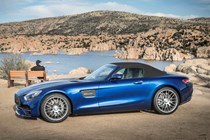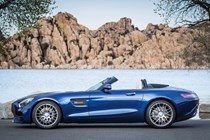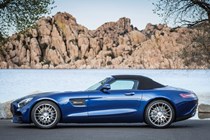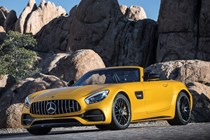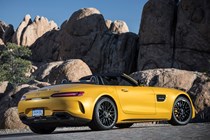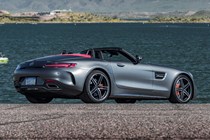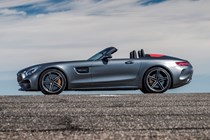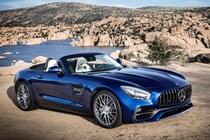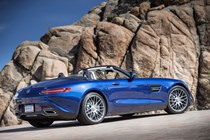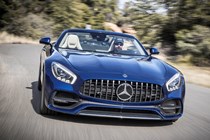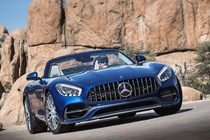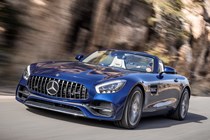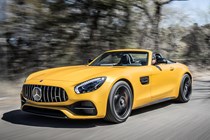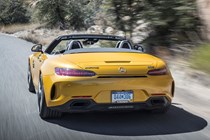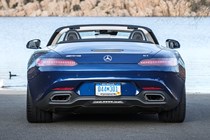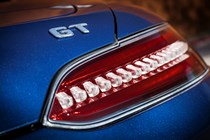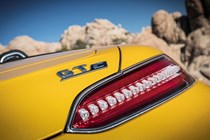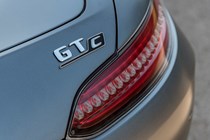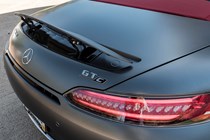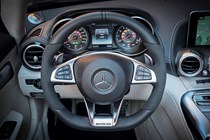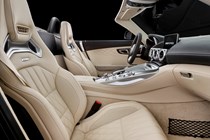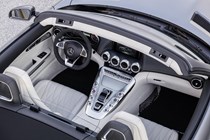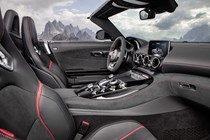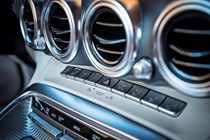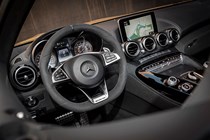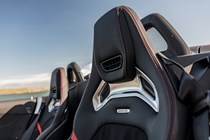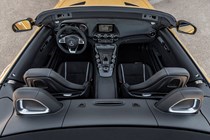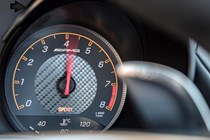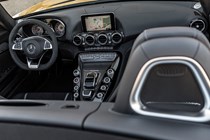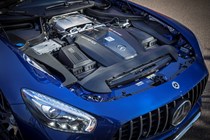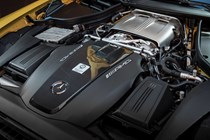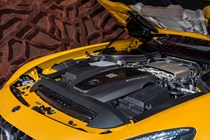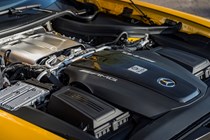
Mercedes-Benz AMG GT Roadster (2017-2023) engines, drive and performance
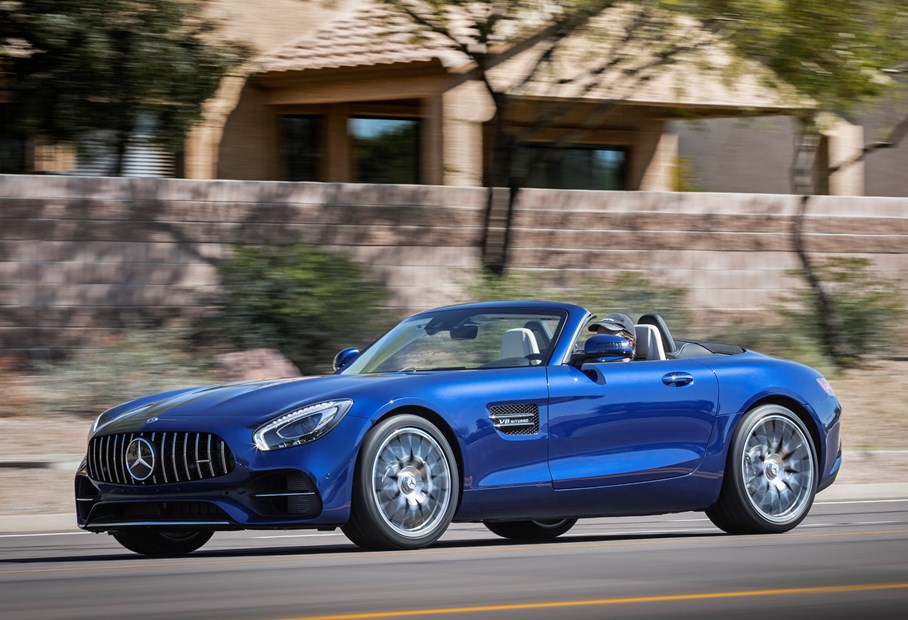
- Excellent response from 4.0-litre twin-turbo V8
- GT C is extremely fast, but GT no slouch
- Standard seven-speed automatic works well
Both versions of the AMG GT Roadster are powered by fundamentally the same 4.0-litre V8 engine. This is specially produced by AMG for its performance variants of Mercedes’ regular model range but is particularly at home here in the marque’s bespoke sports car.
The engine features two turbochargers, positioned between the cylinder banks. This ‘hot inside V’ configuration is said to improve response and increase efficiency. All we know is that it sounds fabulous, and goes like a cartoon anvil thrown off a cliff.
Power, torque, 0-62mph and top speed
In the GT Roadster the engine produces 476hp at 6,000rpm and 630Nm from 1,700-5,000rpm – which is enough for 0-62mph in 4.0sec and a 188mph top speed.
The GT C Roadster gets 557hp from 5,750-6,750rpm and 680Nm from 1,900-5,750rpm; 0-62mph takes 3.7sec, and top speed is 196mph.
Fast and faster
The difference in potency between the two models is certainly palpable, but that’s nowhere near the same as saying the regular GT Roadster feels underpowered.
The engine response is particularly good for a turbocharged car, and if anything, the sound it makes is more cultured than that of the GT C. In the C, the V8 rumble is overlaid by much more obvious turbo noise, in keeping with its more frenetic nature.
Gearbox and driving modes
Both cars feature the same seven-speed AMG Speedshift automatic transmission. This is generally well-behaved and keen to please, though in common with most AMG cars, can get ‘caught’ between upshifts in manual mode if you’re not quick enough when pulling the steering-wheel mounted paddleshifter for the next gear. Gladly, the fully automatic settings work just fine.
A standard-fit driving mode selector offers a choice of Comfort, Sport and Sport Plus settings on the GT – with an additional Race mode on the GT C. These modes get progressively more urgent, with corresponding adaptation of the engine, gear-shift times and suspension (where the variable damping system is fitted).
- Classic sports car formula
- Plus added twist of rear-wheel steering
- Very satisfying to drive
The GT Roadster conforms to the classic template for a sports car: big engine up front sending power to the rear wheels.
However, Mercedes-AMG has not only positioned the engine a long way back so that it sits behind the front axle, it’s built the chassis with a mix of materials – including steel, aluminium, magnesium and composites – intended to deliver strength and optimised weight distribution.
The result is a stiff structure and a well-balanced car. Grip levels are high, while bodyroll is very well suppressed, even in the adaptive suspension’s Comfort setting.
It gets better and better the faster you drive, and delivers an enormous amount of driver satisfaction on a challenging road – regardless of whether you’ve got 476hp or 557hp at your disposal.
Rear-wheel steering – what it does for the GT C Roadster
There are differences between the two models, however, which largely centre around the GT C’s standard-fit rear-wheel steering.
This actively controls the angle of the rear wheels, pointing them in the opposite direction to the front wheels at lower speeds to achieve tighter turning, switching to the same direction as the front wheels at speeds above 62mph for greater stability.
In general, this works almost imperceptibly – though if you’re really pressing on you can feel it pivoting the car into hairpin turns, and just occasionally you might misjudge the amount of steering lock required, as the car changes direction slightly more abruptly than expected.
For the most part, however, it serves to give the GT C remarkable agility for something so large, in a manner that is impressively seamless.
The standard GT Roadster is still fun
This is not to say the regular GT Roadster is dull to drive – far from it, in fact.
If anything, without the rear axle mucking about you get a purer experience, with the reduced variation in cornering response placing more emphasis on the driver when it comes to making quick progress.
We enjoyed driving it a great deal; but the rear-wheel steering is by no means a ‘must have’.


